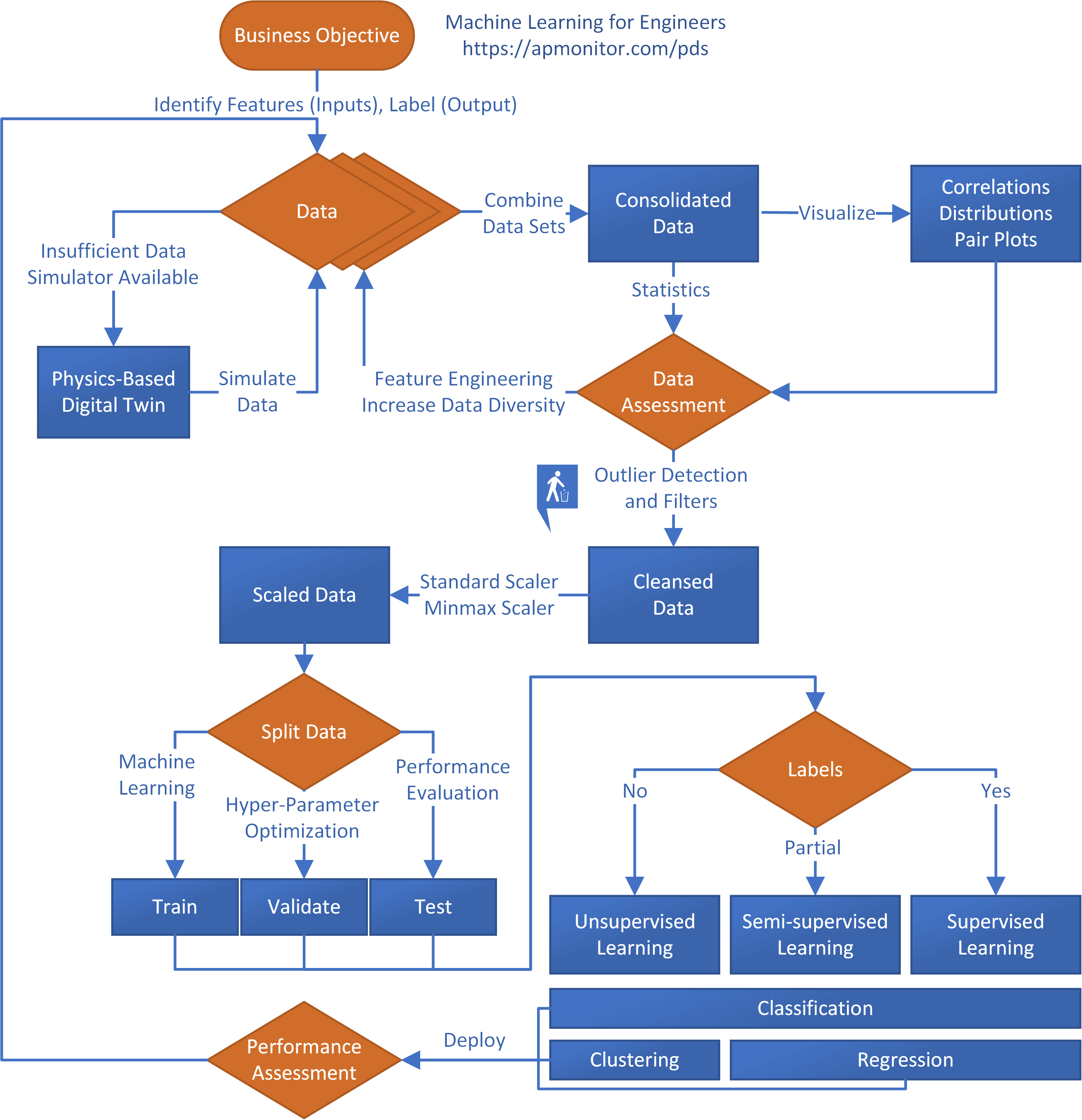All Categories
Featured
Table of Contents
On the other hand, ML engineers specialize in building and deploying artificial intelligence designs. They concentrate on training designs with information to make predictions or automate tasks. While there is overlap, AI designers handle even more diverse AI applications, while ML engineers have a narrower concentrate on maker knowing algorithms and their functional execution.
Device learning designers concentrate on creating and deploying equipment knowing models into production systems. On the other hand, data scientists have a more comprehensive function that consists of information collection, cleaning, expedition, and structure versions.
As companies increasingly embrace AI and device discovering modern technologies, the need for proficient specialists expands. Artificial intelligence designers work on sophisticated jobs, contribute to development, and have affordable wages. Success in this area calls for continual understanding and maintaining up with progressing innovations and techniques. Maker learning functions are usually well-paid, with the potential for high making capacity.
ML is fundamentally different from traditional software advancement as it concentrates on mentor computer systems to gain from data, as opposed to programs specific policies that are implemented systematically. Uncertainty of results: You are probably utilized to composing code with foreseeable results, whether your feature runs once or a thousand times. In ML, however, the results are much less particular.
Pre-training and fine-tuning: How these versions are trained on vast datasets and then fine-tuned for specific jobs. Applications of LLMs: Such as text generation, belief analysis and details search and access.
The Buzz on Interview Kickstart Launches Best New Ml Engineer Course
The capacity to handle codebases, merge adjustments, and fix disputes is just as essential in ML growth as it is in standard software tasks. The skills developed in debugging and screening software application applications are extremely transferable. While the context might change from debugging application logic to determining concerns in information handling or model training the underlying principles of systematic examination, theory testing, and repetitive improvement are the exact same.
Machine knowing, at its core, is greatly reliant on stats and probability concept. These are crucial for comprehending just how algorithms learn from data, make forecasts, and assess their performance.
For those curious about LLMs, a detailed understanding of deep understanding styles is useful. This includes not only the technicians of neural networks but also the design of certain models for various use situations, like CNNs (Convolutional Neural Networks) for picture handling and RNNs (Frequent Neural Networks) and transformers for sequential information and natural language processing.

You must understand these problems and discover methods for determining, minimizing, and interacting regarding predisposition in ML designs. This consists of the potential influence of automated choices and the moral implications. Lots of designs, especially LLMs, require considerable computational resources that are frequently provided by cloud systems like AWS, Google Cloud, and Azure.
Structure these skills will not just promote an effective change right into ML but also make sure that designers can add efficiently and properly to the innovation of this vibrant field. Theory is essential, but nothing defeats hands-on experience. Start dealing with projects that enable you to use what you've learned in a sensible context.

Take part in competitions: Sign up with systems like Kaggle to join NLP competitions. Construct your tasks: Beginning with straightforward applications, such as a chatbot or a text summarization device, and progressively boost intricacy. The field of ML and LLMs is rapidly advancing, with new innovations and innovations emerging regularly. Remaining upgraded with the most up to date research study and trends is critical.
The 6-Minute Rule for Fundamentals To Become A Machine Learning Engineer
Contribute to open-source projects or write blog posts concerning your understanding journey and tasks. As you get experience, begin looking for chances to incorporate ML and LLMs into your work, or seek new functions focused on these technologies.
Vectors, matrices, and their role in ML formulas. Terms like design, dataset, functions, tags, training, reasoning, and validation. Information collection, preprocessing techniques, design training, examination procedures, and deployment factors to consider.
Choice Trees and Random Woodlands: Instinctive and interpretable designs. Assistance Vector Machines: Maximum margin classification. Matching trouble types with appropriate designs. Balancing efficiency and complexity. Basic framework of neural networks: nerve cells, layers, activation features. Split calculation and ahead proliferation. Feedforward Networks, Convolutional Neural Networks (CNNs), Recurrent Neural Networks (RNNs). Image acknowledgment, sequence prediction, and time-series analysis.
Information circulation, change, and function engineering strategies. Scalability concepts and performance optimization. API-driven methods and microservices combination. Latency management, scalability, and variation control. Continual Integration/Continuous Deployment (CI/CD) for ML process. Model surveillance, versioning, and performance tracking. Detecting and dealing with changes in model performance gradually. Addressing performance bottlenecks and resource administration.
Excitement About New Course: Genai For Software Developers
Course OverviewMachine learning is the future for the future generation of software application professionals. This program serves as a guide to artificial intelligence for software engineers. You'll be presented to three of one of the most appropriate parts of the AI/ML self-control; overseen discovering, semantic networks, and deep knowing. You'll realize the distinctions between traditional programs and artificial intelligence by hands-on advancement in supervised knowing before building out complicated dispersed applications with semantic networks.
This training course works as a guide to maker lear ... Show Extra.
The ordinary ML process goes something like this: You require to comprehend business problem or purpose, prior to you can attempt and fix it with Machine Understanding. This often implies research study and cooperation with domain level experts to define clear objectives and requirements, along with with cross-functional teams, consisting of data researchers, software designers, product managers, and stakeholders.
: You choose the best design to fit your objective, and after that train it using libraries and frameworks like scikit-learn, TensorFlow, or PyTorch. Is this functioning? A vital part of ML is fine-tuning versions to obtain the preferred outcome. At this phase, you examine the performance of your chosen equipment discovering design and after that use fine-tune design parameters and hyperparameters to enhance its performance and generalization.
Does it continue to function now that it's real-time? This can likewise imply that you update and retrain models routinely to adapt to altering information distributions or business needs.
4 Simple Techniques For Certificate In Machine Learning

Artificial intelligence has blown up recently, many thanks partly to advances in information storage space, collection, and calculating power. (In addition to our need to automate all the important things!). The Artificial intelligence market is predicted to get to US$ 249.9 billion this year, and then remain to expand to $528.1 billion by 2030, so yeah the need is pretty high.
That's simply one work posting site also, so there are a lot more ML jobs available! There's never been a much better time to obtain into Artificial intelligence. The demand is high, it gets on a rapid development path, and the pay is great. Mentioning which If we check out the present ML Designer tasks posted on ZipRecruiter, the ordinary wage is around $128,769.
Right here's the thing, tech is among those markets where a few of the greatest and best people on the planet are all self educated, and some also honestly oppose the concept of individuals obtaining a college level. Mark Zuckerberg, Bill Gates and Steve Jobs all left prior to they got their levels.
What Do I Need To Learn About Ai And Machine Learning As ... Can Be Fun For Anyone
Being self showed really is less of a blocker than you most likely think. Especially because nowadays, you can learn the key elements of what's covered in a CS degree. As long as you can do the job they ask, that's all they truly care around. Like any kind of new skill, there's definitely a finding out curve and it's going to really feel difficult at times.
The major differences are: It pays insanely well to most other occupations And there's a recurring knowing element What I mean by this is that with all technology roles, you have to stay on top of your game to make sure that you understand the present abilities and modifications in the sector.
Kind of just exactly how you may discover something brand-new in your present work. A whole lot of people that function in tech really appreciate this due to the fact that it indicates their task is always altering a little and they take pleasure in finding out brand-new things.
I'm mosting likely to mention these abilities so you have an idea of what's needed in the work. That being stated, a good Maker Discovering training course will teach you nearly all of these at the same time, so no requirement to stress and anxiety. Several of it might also appear difficult, however you'll see it's much simpler once you're using the theory.
Latest Posts
He Ultimate Guide To Coding Interview Preparation In 2025
How To Master Leetcode For Software Engineer Interviews
The Best Free Websites To Learn Data Structures & Algorithms